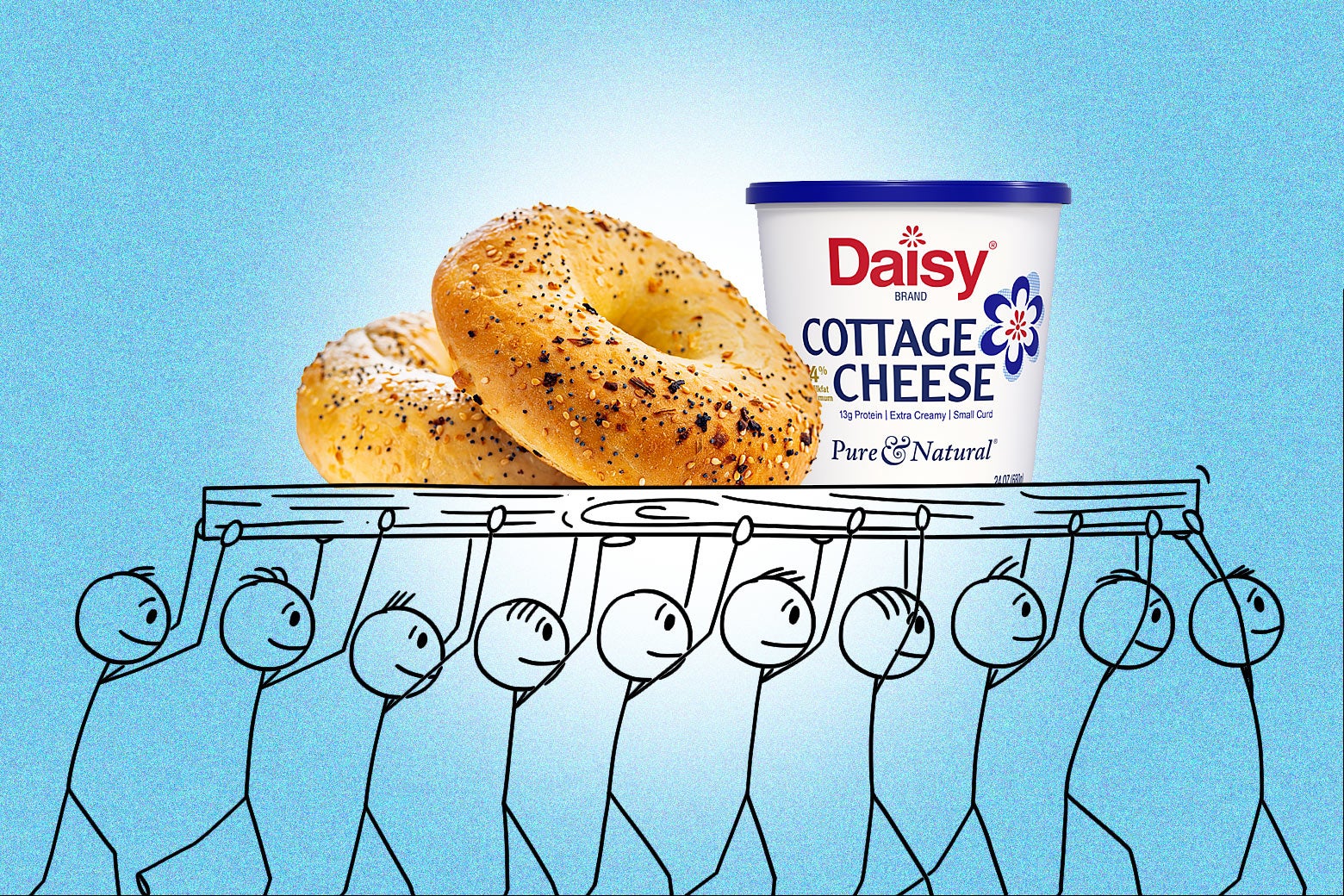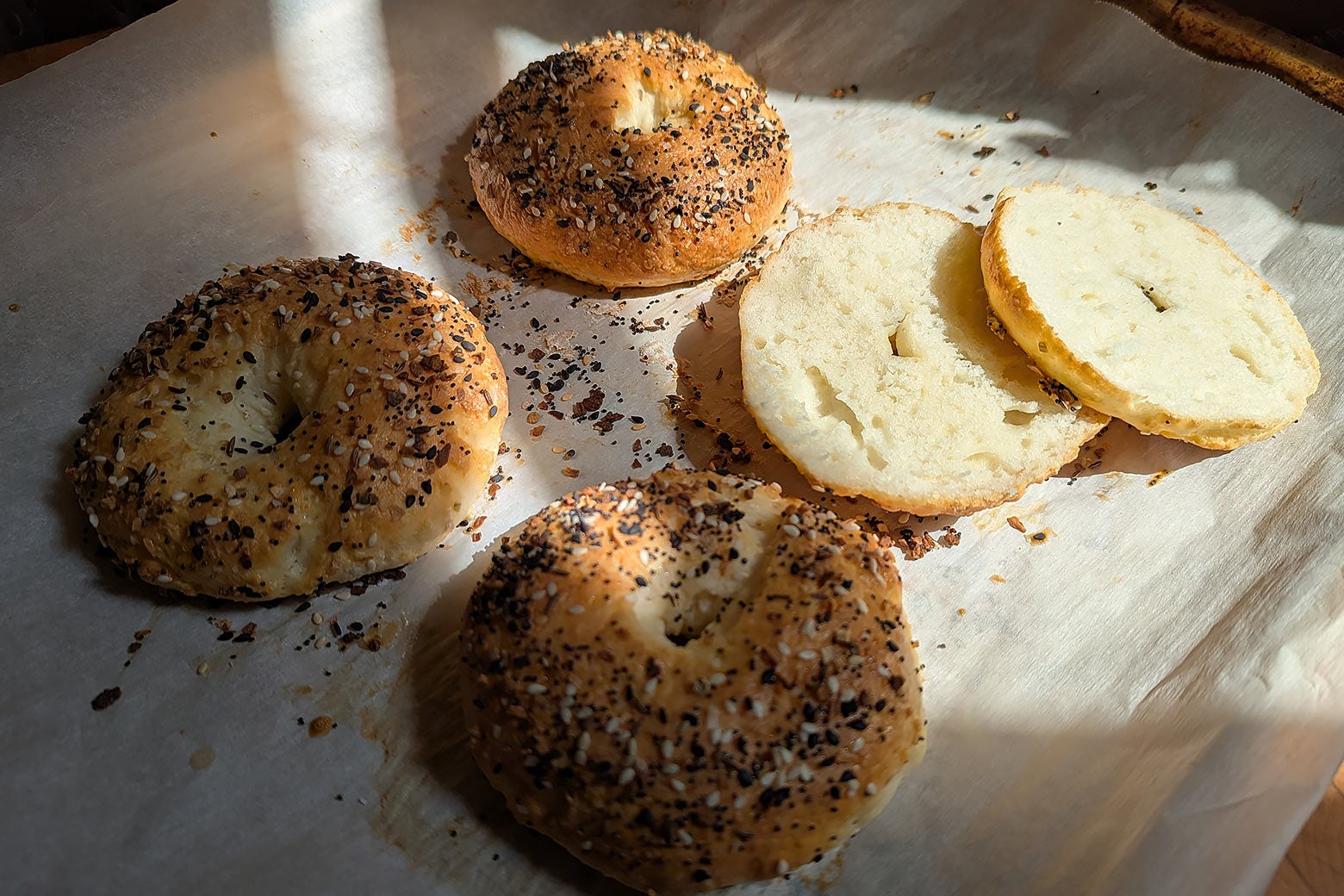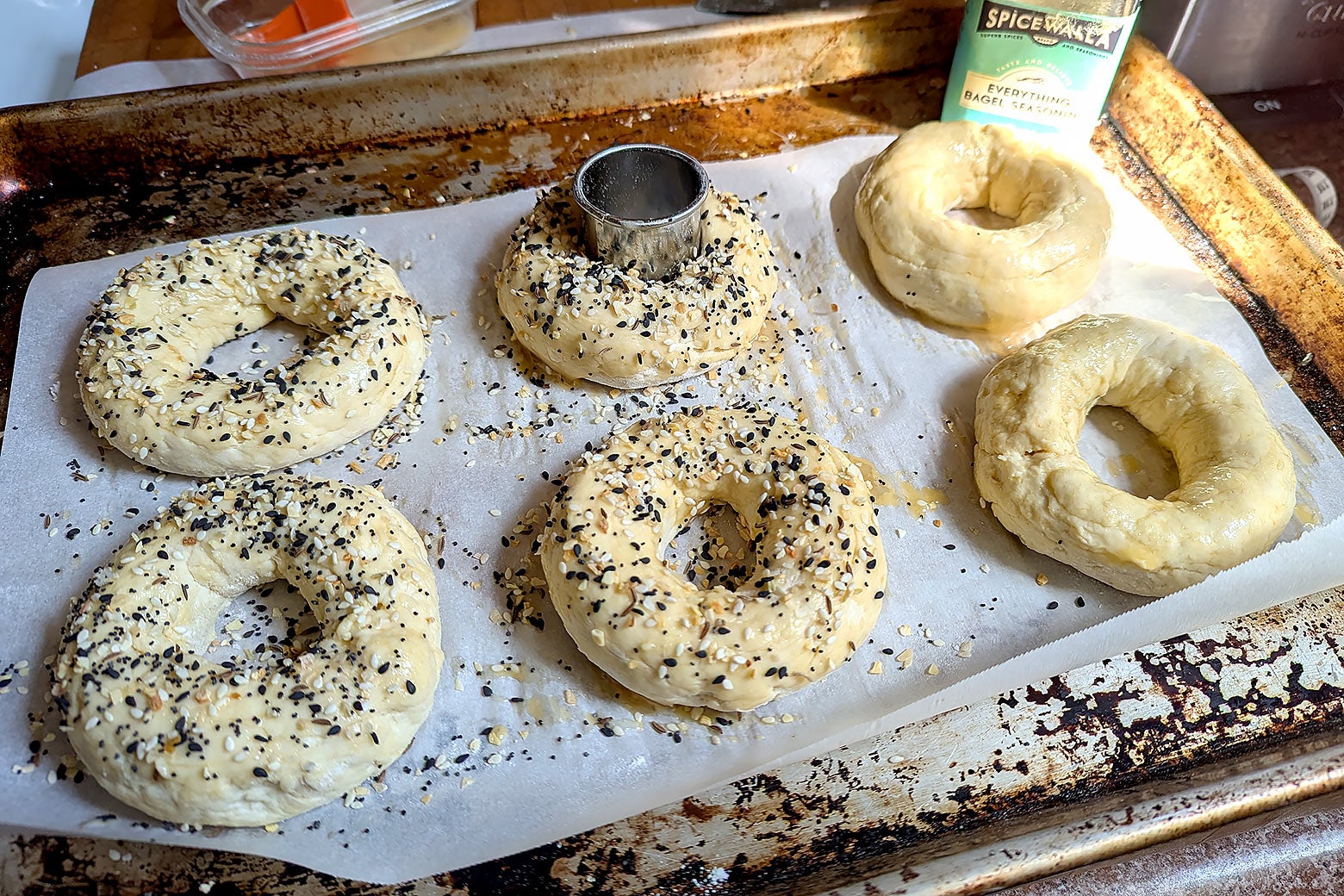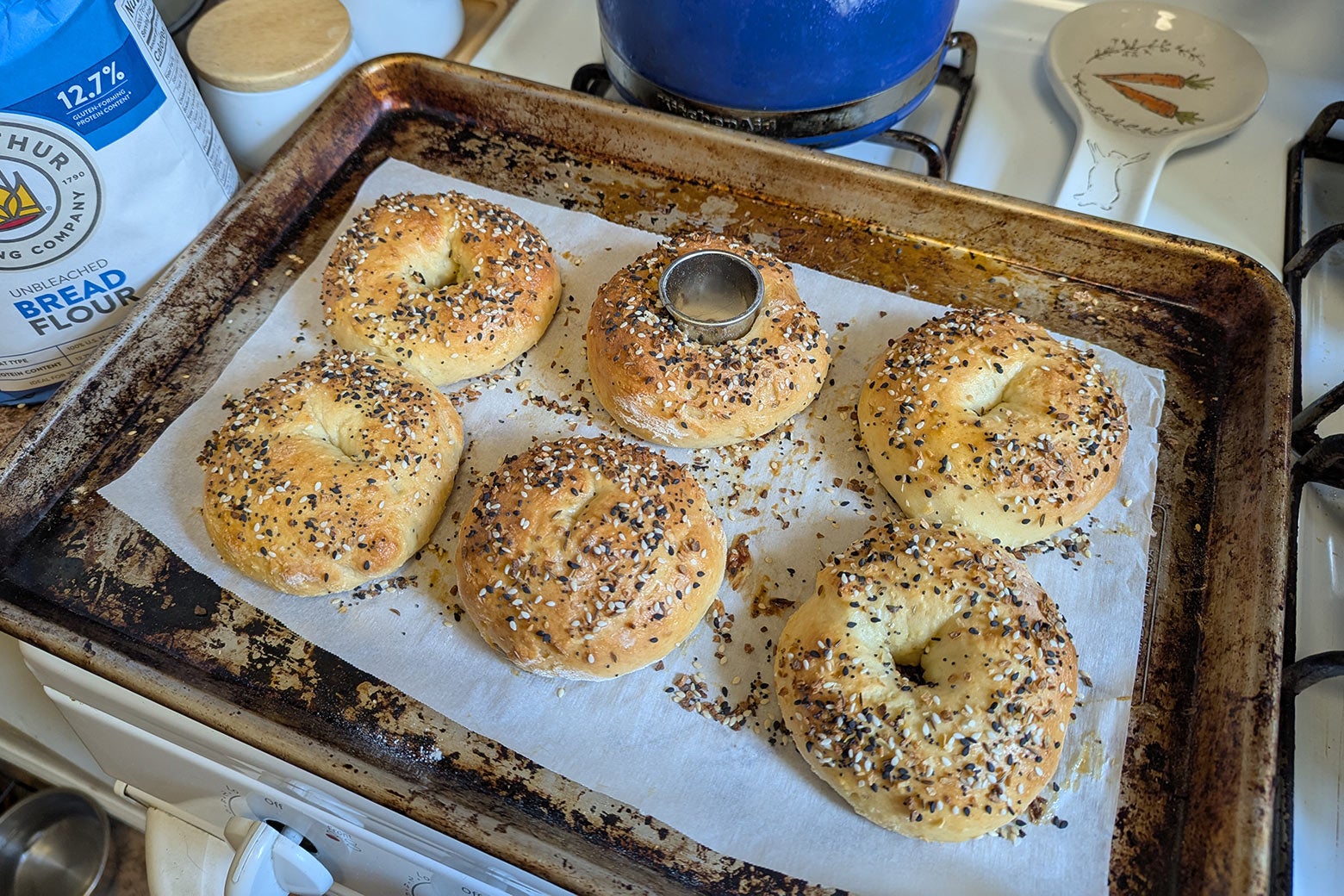
Sign up for the Slatest to get the most insightful analysis, criticism, and advice out there, delivered to your inbox daily.
I’m the kind of home cook who has a pretty accurate running list of the contents of my fridge in my head at all times. When I open that silver door, I have clear expectations about what’s going to greet me. Which is why, a few weeks ago, when I went hunting for a string cheese and was instead confronted by a tub of … cottage cheese … I was caught off guard. Put on the back foot. Domestically unmoored. Now that wasn’t on the shopping list, I murmured to myself. But I knew the milky-chunky mélange had, in fact, been splattered all over social media for the past few months, as the latest “wild!” “game-changing! “you won’t believe it!” means of getting more protein into our diets. Had the cottage cheese craze reached such an ecstatic pitch that a container just went ahead and manifested itself in my own home? Spooky! Did I need to change the locks and recast my wards against unbidden dairy? Do I even have the right color candles for that?!
Fortunately, I didn’t have to worry for long, because one of my partners had simply picked up some Breakstone’s on a whim at the store (he has both keys and ward-passing sigils, of course). Whew. But then again, he was, in a way, an unwitting agent of this cottage cheese moment—I cannot remember ever purchasing the product in our almost eight years together, and yet here it was, as though plopped down directly out of the zeitgeist. “I just had a hankering for some,” he explained, naively. But after some consideration—and a few pleasing, Triscuit-borne scoops—I decided to regard the appearance as a sign: It was time for me to take this cottage cheese thing seriously, to understand the hoopla and discover where it might fit into my regular eating practice.
If I sound a little distant from cottage cheese, that’s because, prior to this encounter, we were strangers. I vaguely remember my mom, like many such moms, having a Prevention magazine–fueled fling with it in the ’90s, when it was promoted as a low-calorie snack, but I don’t think I partook, because yucky. And, once it fell out of fashion alongside sun-dried tomatoes and trampoline aerobics, it never really crossed my mind—or mouth.
But in 2025, cottage cheese is the “it” food at the center of our current nutrition fad: protein loading. As Cut writer Danya Issawi put it in a recent assessment of the phenomenon (which really extends back into 2024 at least), “Now, cottage cheese has rebranded as the bone-strengthening, muscle-building panacea for an allegedly protein-starved society.” As far as fads go, this one strikes me as relatively harmless. Cottage cheese is indeed high in protein, with 13 g per ½-cup serving (that’s Daisy, my queen), and protein is surely useful for staving off hunger and getting swole, if that’s your goal. Additionally, cottage cheese is a more environmentally friendly and affordable means of maxing those macros compared with, say, beef.
And from a culinary perspective, it’s really not the worst: Yes, people are “sneaking” the mucilaginous goop into all kinds of dishes, some sensible (lasagna and, classically, baked mac and cheese) and some a little weird (“smoked salmon with beetroot cottage cheese”). But fact of the matter is cottage cheese works well as a topping, a filler, and a binder; it can easily and inexpensively replace less healthy ingredients, with minimal harm done to the final result in most cases. And if the objectively gross texture is a turn off, that’s easily remedied with a quick whip in the food processor. Or, by disappearing the stuff into another form entirely.
Which brings us to the magical, munchable cottage cheese bagel. This innovation—which involves fashioning bagels from cottage cheese, rather than merely topping them with it—is the curd tizzy’s most recent iteration on TikTok, and it’s the first novel use of the food I’ve come across that actually piqued my interest as a cook. Recipes for the CCB have been around for a minute, building on earlier versions made with that dusty has-been Greek yogurt. But the current buzz seems to have been inspired by a late-February video in which Bethenny Frankel—the Real House Wives pioneer and heroine who stole Skinnygirl Margaritas from the gods for us mortals—throws a batch together at home and is launched into paroxysms of joy, and maybe terror, at the result: “They’re insane! I’m gonna do a pop-up, I don’t know, a lot of things are happening, this is very big, I need an agent, I’m freaking out, this is insane—like, don’t look me directly in the eye. This is the work of a master!”
Quite the endorsement! While I’m not usually one for gimmicks in the kitchen, there’s no question: Those cottage cheese bagels (“bagels,” if you like) look solid, and if they’re really that easy to throw together, with basically two ingredients and a half-hour bake, you’ve got my attention. Before all the bagel purists out there are like, “But, ew, why?,” allow me to explain my thinking.
Two things. No. 1: I enjoy baking of all sorts at home, but I have long felt that bagels are one of those items best left to the professionals. I live in New York City; I know from a good bagel. Despite the recent “cataclysmic closure” of my go-to spot, it’s still just too easy to get a quality dozen here and, based on recent experience, in many areas of the country. And when you consider all the foolishness involved in DIY—yeast rising, malt syruping, multiday resting, boiling and baking—who has the time? But! If I could fashion a sufficiently passable dupe that also happens to be healthier and potentially more satisfying, that could indeed change the game, at least in terms of my weekend brunch possibilities.
That “more satisfying” note points to my reason No. 2: Real bagels have a major flaw that people don’t talk about enough—for all their doughy heft, they often leave you hungry and sugar-crashy an hour or two after consumption, since they are, after all, mostly carbs. (I’m talking about a bagel and a smear of cream cheese here, without piles of other stuff—and to be honest, a few slivers of lox doesn’t really add all that much staying power.) I do not consider traditional bagels a reliable breakfast for this reason, because I need and expect my morning meal to keep me going for at least four or five hours, humming along until luncheon. So, if the CCB could solve that—if it could function as a tasty bagel experience that also kept me dependably full, due to all the extra protein content—sure, I’m willing to preheat the oven.
But wait! Just before I pulled down my flour canister, the journalist in me thought to do a little fact check. As it turns out, just last week, Caroline Tien over at Self examined the CCB trend with a registered dietician, and they discovered that, for all the hype, the CCB only has marginally more protein than your average bagel (the latter land somewhere in the range of 8 to 9 grams, while the CCB recipes out here are claiming 9 to 12 grams). The reason, as far as I can suss it, is this: For all the protein added by cottage cheese, traditional bagels are almost always made with bread flour as a base, which has a higher protein percentage than all-purpose, and the latter is what all the trend recipes are using. So, if you’re following Frankel and her copycats, you may not be getting as much bang for your bagel as you think.
This revelation was disappointing, but it also got my baking gears turning. Not that I personally cared that much (I only kinda lift, bro), but surely there was a way to juice the protein count at least a little higher, while, more importantly, also improving on the CCB’s texture, which many commenters described as closer to a soft English muffin or something called a “breakfast roll.”
To find out, I first made a batch of what I gather to be the standard template: This recipe from the food blog What Molly Made (first on my Google) calls for a cup of self-rising all-purpose flour (which contains its own leavening and salt), a cup of whipped cottage cheese, and seasoning. I trusted it over Frankel’s more free-form approach because it involves some quick kneading and rolling the dough into ropes before forming rings, which I figured would result in a more appealing shape and better gluten development (for chew!). A brush of egg wash, a shower of everything bagel seasoning, 30 minutes in the oven, and there they were—four steaming objects that certainly resembled bagels resting on my sheet pan.

So, were they the same? No. They were giving something more like “Panera Asiago Bagel Sandwich” vibes, if that resonates? This was not necessarily a bad thing, especially after a good toasting, but the texture was soft and the size ran small, something like 3 inches across and 1 inch high. (They were also a bit salty—I now know that different brands of cottage cheese have different amounts of sodium, so definitely watch that with regard to how much extra salt you add to the batter.) Overall, the Molly CCB was, shockingly, not a top-tier NYC bagel, but I’ve absolutely had worse in the “traditional” category. They were enjoyable and relatively filling—especially with the addition of yet more whipped cottage cheese as the spread. Overkill? Maybe, but consider this: Yet more protein, and honestly, it tasted pretty similar to some small-batch cream cheeses I’ve sampled, which are generally tangier and sometimes looser set.
OK, so we’ve had the status quo. Good, but not great. How could I elevate things, both in terms of protein and texture/flavor? As I pondered this, absent-mindedly tracing trails through the poppy and sesame debris on my sheet pan, I remembered about the bread flour. King Arthur’s has 12.7 percent protein. Of course! That’s where we had to start, and we could up the ante—sub some of it out for fine-ground semolina (often used for pasta), which boasts about 13 percent and would give us a nuttier, chewier “bagel” than Molly’s. I would also double the base recipe but divide the dough into six portions, rather than eight, to pump up the size and give us a familiar half-dozen. Whiz, bang, boom, and in they went. (Full recipe below.)

As they cooled, I was nervous—was chasing the whey horse like this really worth it? But then I sliced one in half, ran it through my toaster, and … when I tell you that the result was indistinguishable from the real thing, I am not exaggerating. These bagels—now free from scare quotes—were springy and crusty, substantial and chewy in exactly the right way, with a nice tan color inside, a glossy, seed-studded exterior, and a lovely flavor all around. As for protein? I am not a dietician, registered or otherwise, but my back of the envelope calculation (based on ingredient labels) suggests that each of these bagels packs about 15 grams—certainly more than the going rate. And if you add a quarter cup of whipped cheese spread, you bump that up to between 21 to 22 grams per serving. Not too shabby!

If you feel called to explore the far reaches of protein packing, you could seek out King Arthur’s “Sir Lancelot” flour, which (if you trust the guy …) has the highest count on the market at 14 percent. Or you could try upping the proportion of semolina a bit more. What I would not do is dump in a scoop of protein powder—I entertained the idea but ultimately didn’t try because Reddit says it can have strange effects on baked goods not designed around it, particularly in terms of messing with gluten formation (i.e., screwing up your texture). Better to keep that stuff to a shake on the side.
So what have we learned here? The cottage cheese bagel appears to be the rare TikTok food to-do that is actually worth your time. Again, no, duh, stop asking, they are not “the same” as a boiled bagel from your favorite guy. But they are something you can easily make yourself when that guy has ghosted, or you, like me, find that a tub of cottage cheese has mysteriously materialized in your fridge. And I’m telling you, if you can banish prejudice from your heart for even one bite, you will not notice the difference.
Oh! And if the whipped cottage cheese—which you can make by simply blitzing a quarter-cup per bagel beyond what’s required for the recipe below—isn’t quite giving you the schmear experience you crave, try adding a tiny bit of granulated sugar (about ¼ tsp to a half cup, for two bagel servings), and let it firm up in the fridge for like 15 minutes. Trust the alchemy; see what you think. If you’re still spooked, you can always flee back to the safety of Philadelphia.
Higher Protein Cottage Cheese Honest-to-Goddess Bagels
(Adapted from the What Molly Made “High-Protein Cottage Cheese Bagel” recipe)
Makes 6 bagels
:
1.5 cups bread flour, plus more for dusting (recommended: King Arthur)
0.5 cups fine semolina flour (recommended: Bob’s Red Mill)
2 tsp baking powder
1 tsp fine sea salt
2 cups cottage cheese (recommended: Daisy)
1 egg, lightly beaten with a few drops of water, for wash
Everything bagel blend or other seasoning
Preheat the oven to 375 F with a rack in the top third, and line a large sheet pan with parchment paper or a silicone baking mat.
Combine the dry ingredients in a large bowl and whisk until well blended.
In a food processor, or using a hand mixer and another bowl, whip the cottage cheese until smooth (about 1 to 2 minutes).
Add the whipped cheese to the dry ingredients, and using clean hands, gently blend until the dough starts to come together—it will start out shaggy and then cohere relatively quickly. Knead the dough in the bowl briefly, about 8–10 folds. It might seem dry at first, but as you knead, the flour will hydrate, and it should eventually become a solid, slightly tacky ball.
Transfer dough to a work surface dusted with flour. Pat the dough into a thick, rough rectangle, and divide it (with a bench scraper or a knife) into six equal portions. (If you want to be exact, you could weigh the ball and then divide; in my case, each portion weighed about 130g.)
Take one portion, and using a bit of flour as necessary to keep it from sticking, roll it into a 9-inch rope. Wrap this into a circle and pinch the ends together. (If the ends aren’t wanting to stick, brush them with a bit of egg wash.) Gently shape the round into the best bagel shape you can, but don’t fuss—these won’t have much of a hole and should be rustic! Repeat with the other five portions.
Place the bagels on the prepared baking sheet an inch or two apart. Brush each all over with the egg wash, and sprinkle generously with your seasoning of choice.
Place the pan into the oven and bake for 25–30 minutes, until the bagels are golden brown and firm to the touch. Allow them to cool completely on the pan, at least 1 hour (this is crucial for the crumb to set up properly).
9. Slice, toast, and serve with whipped cottage cheese topping or whatever your heart desires. Store extras in a sealed container unrefrigerated for up to three days, or freeze.
Get the best of news and politics
Sign up for Slate’s evening newsletter.










